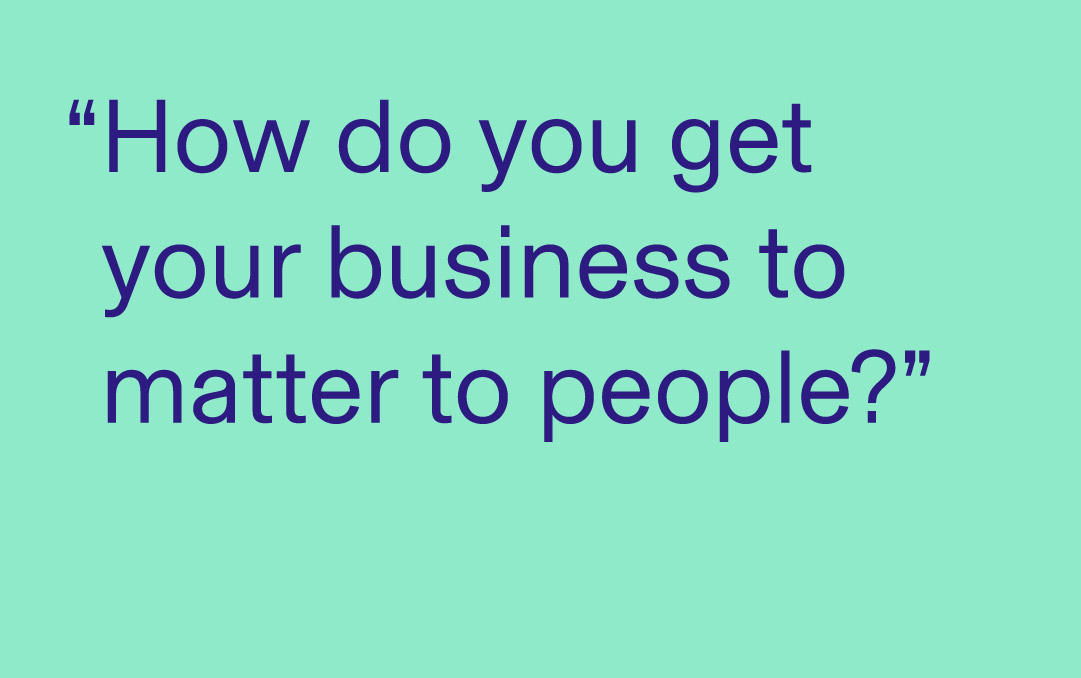Looking Back
As I look back on this year and reflect on the work we did, the shifts our agency made, the clients we encountered, and everything else in between, I can’t help but share some significant insights and lessons I learned working in a San Francisco brand agency.
Agile Strategy Meets Actual Reality
This year was about meeting clients wherever they were on their brand strategy journey and finding tangible ways to deliver impact to their business and brand. Luckily, we saw this coming. We developed new ways to adapt our more linear brand strategy methodology to the changing needs of business leaders over the past two years.
This year was about honing in on how to deliver the strategic thinking and creative opportunities at a high level on a shorter timeframe. Working in agile ways requires a completely different approach to strategy. So we adjusted our agency at every level from operationally scoping a project to delivering a statement of work (SOW) — fast. Our projects are specific. We work in sprints. We are more collaborative with leadership teams. And we are developing a strong reputation for leading this style of work with high-growth companies.
Investing in Employer Branding and Culture
This year we saw a big shift in both interest and funding for developing employer brands and improving employee engagement and culture. This is an exciting turn for us as an agency as we strongly believe your brand comes from the inside out. We had more inbound calls this year and worked on more employer brand projects than in the last few years combined.
Research by PWC points to CEO’s being concerned about not being able to recruit top talent. And we have seen this ourselves with some of our larger, global enterprise tech companies this year. Recruiting and keeping top talent requires an investment in brand. So we are excited to see employer branding become more of a part of marketing. This will enable a more integrated approach between corporate brands and employer brands. Music to our ears.
The CEO Makes All the Difference
At Emotive Brand, we work in the C-suite. It’s where strategy is developed and executed. It’s where purpose and vision are born. And it’s the only place you can actively drive meaningful change. But, not all CEOs are the same. Their needs and interests around the brand they support vary dramatically.
As a whole, the projects that we worked on that were the most successful stemmed from an actively engaged CEO: someone who understood the full value of brand strategy. Brand strategy projects that do not actively include the CEO as a driver of the project become less strategic and tend to lose momentum and focus.
Sales-led Brand Strategy Resonates
As an agency, we have a very sales-led approach to developing brand strategy. And we’ve started using it in how we market ourselves as an agency and how we develop brand strategy. Executives want to know that you care about driving their business forward in all areas – most especially increasing revenue and profit. When we work closely with the CRO or Head of Sales, we see the impact of our work on the business’ bottom line. We get inside of the sales organization to learn what’s working and what isn’t. What their prospects and clients are looking for. What messages resonate and don’t. It helps us hear what the brand is doing well and what it needs to do to better compete as voiced from the front line. And when we intimately understand the needs of the customers, we’re better positioned to craft a strategy that resonates at an emotional level.
What does that mean for Emotive Brand in 2017? A Return to Brand
I believe we will see a renewed focus and an increased investment in brand strategy across the board.
Businesses that thrive will be those that have a solid brand strategy in place to drive growth, differentiate, and enable more meaningful experiences. In order for marketers to be strategic and successful within their own organizations, they will need the brand to work harder for them than ever before. And in order to meet the needs of marketers, I imagine brand strategy will become even less traditional: more strategic, more purposeful, and more personalized in its approach.
At the same time, clients will have a new opportunity to lean into brand strategy with confidence knowing they don’t necessarily need to buy the whole enchilada. I think we will continue to see clients looking for specialized projects – ones that meet the immediate needs of the business.
What does that mean for us at Emotive Brand? A continued commitment to be more flexible. We can no longer rely on a one size fits all solution to brand strategy. So we plan on doubling down on our time spent listening to client needs in order to craft the right solutions that meet those needs and create maximum impact. And we will be working even harder to develop the right processes and frameworks to do just that. Here’s to a strong 2017!
Emotive Brand is a San Francisco brand agency.











